Radical Cities | Justin McGuirk
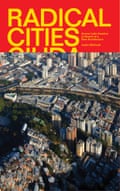
No book better captures the Latin turn that urbanism seems to have taken this decade than Justin McGuirk’s Radical Cities. Something of an urbanist Motorcycle Diaries, his fine study identifies a continental seam between the formal and informal, the planned and the expedient. He follows this seam from Argentina’s Tupac Amaru housing collective to the work of activist/architect Teddy Cruz at the US-Mexican border, with visits along the way to Bogota’s provocateur mayor Antanas Mockus, the favelas of Rio and Caracas’s notorious vertical squat Torre David. You may well come away with renewed hope for the future of megacities — and will definitely understand why the most intriguing developments in contemporary urbanist practice all seem to have have un cierto sabor Latino. Adam Greenfield
The Art of Stillness | Pico Iyer
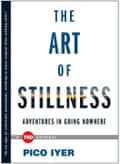
This should be called the anti-city book. Pico Iyer, well-known globetrotter, attains travel nirvana and concludes that the best place to visit in these frenzied, overconnected times is ... nowhere. Subtitled Adventures in Going Nowhere, Iyer’s book is a comment on urban living and resistance to the fad of incessant travelling. He is certainly an advocate for his own life: living in rural Japan without internet, television, mobile phone, car or Facebook. However, this is not a self-help book with meditation tips. (Iyer himself doesn’t meditate and doesn’t insist you do either.) Rather, it is a series of glances at the lives of those who have found peace, such as Leonard Cohen, who, after a life of indulgence, found the ultimate seduction in a monastic life. Benita Fernando
On the Run | Alice Goffman

With the news from Ferguson and New York refusing to go away, Alice Goffman’s On the Run becomes increasingly relevant. This study of how young black men survive in the vastly unequal American city is populated with real people and their everyday trials, brilliantly brought to life with academic attention to detail. One in three black men is likely to spend time in jail, and this is a searing portrait of the lives behind the statistics: constantly under threat from the police, courts and incarceration. It is the unacceptable testament to the impact of race and inequality on our modern cities. Leo Hollis
The Responsive City | Stephen Goldsmith and Susan Crawford

Goldsmith and Crawford take on the potential of technology and data to help governments improve city services, better engage with citizens, and of course save money. But The Responsive City: Engaging Communities Through Data-Smart Governance also gives many examples of where this is already happening today, ranging from big wins – like saving lives by predicting what buildings will catch on fire in New York – to smaller blocking-and-tackling items, such as better rat management in Chicago. The book is definitely written by optimists, but in an era with so much cynicism, it is refreshing to read a “can do” take on local governance. Aaron Renn
Shanghai Homes | Jie Li
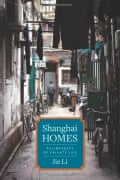
This is a delightfully detailed study of the urban culture and history of Shanghai’s vernacular alleyway neighborhoods, revealing a hive of familial secrets, often painful and unspoken. Focusing on the homes where her grandparents spent much of their lives, Li tracks the families and individuals who rose and fell during the political turmoil of a new socialist China, the violence of the Cultural Revolution and Shanghai’s recent boom years. Particularly revealing are the interviews and illustrations by the author’s parents. They depict how an alleyway home was ruthlessly dissected over the decades into smaller rooms: initially built to house a single family over generations, the homes eventually accommodated assigned neighbours – condemned rightists, shamed intellectuals, rejuvenated proletariats, smug party members, petty urbanites and so on. Sue Anne Tay
Oxford Street, Accra | Ato Quayson
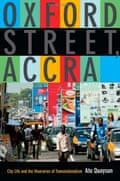
What can a street teach us? In Oxford Street: City Life and the Itineraries of Transnationalism, Ato Quayson helps us go beyond the superficial spatial cues of this seemingly typical urban African street. He investigates the people and their interactions, in the past and present, and how these cumulatively create a sense of place. It’s an anthropological framework for examining Accra from the ground up: not its concrete structures, but its migrations – of Ga, Osu, Afro-Brazilian, Danish and Lebanese, and today’s traffic of Ghanaians and expats – and the social, economic and political forces that make the Osu neighborhood. Victoria Okoye
Sunrise-to-High-Rise | Lucy Dalzell
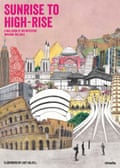
Lucy Dalzell’s beautifully illustrated “wallbook” takes us from Neolithic long houses and the Great Wall of China through to Tate Modern and Shigeru Ban’s paper houses, via a 10-panel timeline that creates what is effectively a tapestry of a Calvino-esque fantastical city. The right kind of kid could spend hours obsessing over it and grow up to create their own addition to the pantheon – and with any luck a swanky house you can retire in. Chris Michael
London: The Information Capital | James Cheshire and Oliver Uberti

In London: the Information Capital, UCL geographer James Cheshire and designer Oliver Uberti have created 100 visually stunning maps and graphics to help you see the capital through fresh eyes. The book draws heavily on census data – but the authors have also crunched data from other sources such as Twitter, Oyster cards and GPS tracks of planes, bikes and runners to visualise the city in beautiful and informative ways. My personal favourite transforms data from an ONS life satisfaction survey – stress, tiredness, satisfaction – into facial attributes. Compared with the smug ‘rest of Britain’, much of London does seem to have issues – but what Londoner would want to live anywhere else? Nick Mead
The Interior Circuit | Francisco Goldman
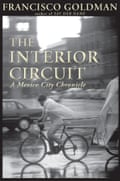
It takes bravery, or at least fatalism, to drive in Mexico City. Having developed a bit of both in the years after his young wife’s sudden death, Guatemalan-American writer Francisco Goldman took on the challenge of learning to navigate his adopted hometown by car as a way of extracting himself from the self-destructive lifestyle into which the tragedy plunged him. The Interior Circuit tells of not just his struggle for self- and urban mastery, but of the city’s own – against its political corruption, its student unrest, its stark class divisions and its popular image as a crime-racked, death-obsessed, “surreal” sort of metropolis. Colin Marshall
Urban Smellscapes | Victoria Henshaw
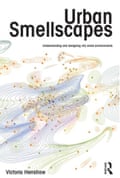
What does your city smell of? You might not have thought about it much, and that was precisely the motivation for urban planner and academic Victoria Henshaw, who died in October, to write this most intriguing book. Through a rigorous analysis of changing attitudes to smell – written in a style that can read like a PhD thesis – she unpicks the importance of aroma in shaping our perceptions of places. She tracks how odour has been variously celebrated, banished, or else simulated, through a number case studies of factories, breweries and urban parks, and through “smellwalks” undertaken around the world. After reading, you won’t be able to stop sniffing in the street. Oliver Wainwright
What have we missed? Tell us below

Comments (…)
Sign in or create your Guardian account to join the discussion